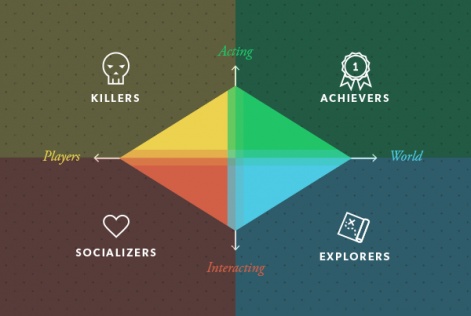Torulf Jernström is CEO of Finnish developer Tribeflame.
His blog is Pocket Philosopher.
You can read all his weekly PocketGamer.biz columns here.
You shouldn't choose who your players are.
If someone you thought would never like your game turns out to love it, be happy and try your very best to make them happy.
However, it is a good idea to have a customer in mind when you start developing your game. And picking yourself might not be the best answer.
The developers of Sunset even said that "whatever we enjoy is never, ever, what the gaming masses enjoy."
By gamers, for everyone
Most game devs are from a subset of the population. We like certain things.
If everyone builds games for themselves, 5% of the population ends up with an oversupply of games tailored for their tastes, while 95% of the population will have no games at all to suit their preferences.
If you want to earn a living from a game, please make sure that your customers have their own credit cards
Even if the typical game developer is also a heavy consumer of games, we cannot all just be building games for ourselves.
Not for the kids
Another common misunderstanding - at least among the general population - is that games, and mobile games in particular, are made for kids.
Looking at the early App Store success stories - and some of the current ones - you might very well get that impression. They have very cute graphics with garish basic colours. Surely, they are made with kids in mind?
Let me tell you that they are not.
At Tribeflame, we've made that mistake, and advise you to learn from our mistake.
If you want to earn a living from a game, please make sure that your customers have their own credit cards. If your main target group is too young for that, you will earn nothing from them.
You see, if a kid wants to spend in games, they will need to ask their parents to do it for them. By the time the kids explain it to their parents, it really does not matter anymore how great a value you have constructed around your IAP.
All the parents will hear is that their children want to spend a few dollars on something completely useless in a garish phone game.
On the other hand, if you get the parents hooked on your game, we're in a completely different place. Now, they really want to achieve that cool thing your game shows them.
And since they have a little money, but are pressed for time, it suddenly makes complete sense to spend only the equivalent of a cup of coffee to jump ahead a bit in the game!
Choose your audience
So, where should you start when deciding who to build your game for? There are a few deciding factors:
- Your team's skills and interests. Yes, this does play a role, but it's not the only factor you should take into account.
- Your existing fan base, if you have one. We've learned the hard way that some cross promotions work, while others are completely useless. If you jump too far from one customer group to another, you will have to either partner up with another company who already has access to those customers - or spend quite a bit on User Acquisition to get a foothold.
- Competition already in the market. It might not be a good idea to go head to head against King or Supercell. Just saying...
- Player types and demographics. The standard way of grouping players is the Bartle model that divides players into four groups: Achievers, Killers, Socializers and Explorers.
It's useful, but also limited. Dr. Bartle originally did this grouping based on how players behaved in one particular online game. Which means that it should be based the mother of all skewed sampling methods.

I, personally, would probably never have played that game (a MUD, which is an exceedingly nerdy all-text adventure), and thus I, and people like me, would not have been part of the sample when the model was constructed.
Dr Bartle himself has said that his model does not apply to all games.
Updating for mobile F2P
For most mobile games, we can do better than Bartle's basic MUD-based model. Actually, the University of Turku, who is located next to us, has recently done research on how people play games.
Their research covers the whole population, rather than only people interested in specific online games.
With a sample of 3,400 people (general population, rather than just self-identified gamers), they were looking into what kinds of game mechanics people prefer to play, and which ones go well together.
After running the answers through some statistics, people seemed to group into 5 categories:
- Assault (killing, destroying, stealing, sneaking etc),
- Manage (developing cities, managing resources, directing troops, manufacturing vehicles etc),
- Journey (collecting rare items, developing character's skills and abilities, exploring the story and the gameworld etc),
- Coordinate (jumping on platforms, staying in the rhythm, match-3 etc),
- Care (kissing, hugging, having sex, taking care of pets etc)
The study is not published yet, but I'll let you know when you can get the details of it.
(And, yes, I realize that this is not a huge way off the 4 Bartle types.)
One last tip: a few raving fans (and a bunch of haters) are better than merely OK for everyone.
Remember that it's the superfans that pay your salary.
Just Google the most disliked YouTube video ever if you want proof. It's by Justin Bieber. I hear he's doing alright financially.





















